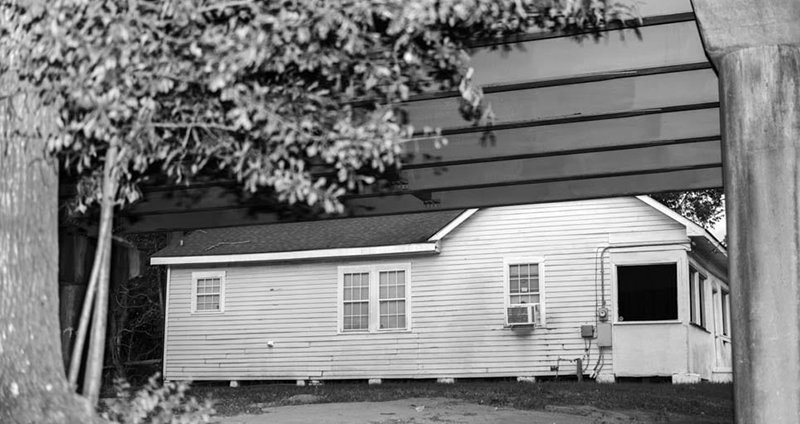End of year is a time of deadlines, holiday to-dos, and shorter days. And though I hate to add to your growing list, consider blocking off some artful me time. It will revive your spirit and save you from a bad case of FOMO come the new year. This month, take a break from your December to-dos and make time to experience one or more of these inspired and inspiring art exhibitions before they close.
CRIP*
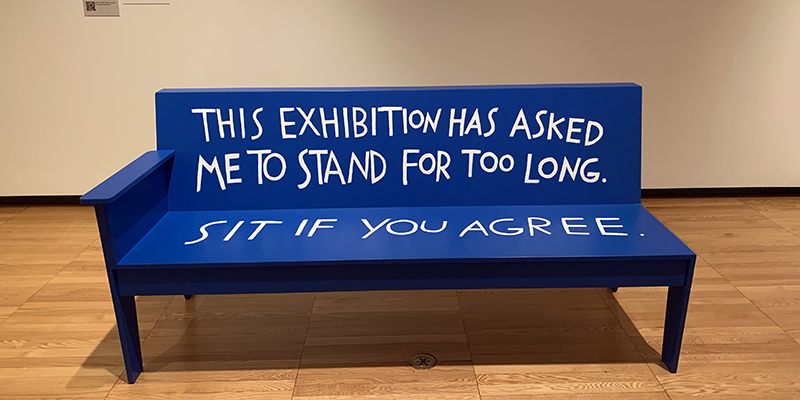
Shannon Finnegan, Do you want us here or not? 2018, MDO, Paint @ Shannon Finnegan. Photo by Debra Domal.
During my fall visit to Krannert Art Museum, I paired two exhibitions which investigate our assumptions about embodiment. Crip*, which takes its name from the arena of crip theory and the reclaimed affront at its core, is an immersive experience.
Crip Theory investigates and describes “how compulsory heteronormativity and compulsory able-bodiedness rely on non-normal bodies and identities to exist. Normativity is essentially held in place, and defined by, all of the things that “it is not.” Non-normative identities are shaped around and against normativity and are required to remain non-normative in order to preserve normative continuity. “
From the addition of adaptive technologies, to the foregrounding of non-normalized bodies, Crip* seeks to “utilize productive aspects of that identity while resisting its limitations, primarily to forge connections and networks across multiple identity distinctions.” The artists in Crip* “take on and push against rigid identity distinctions by presenting complicated works that resist reduction.” This important exhibition will forever change how you perceive public spaces and the problematic assumptions they reinforce.
Crip*
Through December 11th
Krannert Art Museum
500 E Peabody Dr, Champaign
Museum Hours: T-Sat, 10 a.m. to 4 p.m.
(Closed Sunday and Monday)
Plan your visit here.
Future Spaces In Community Places
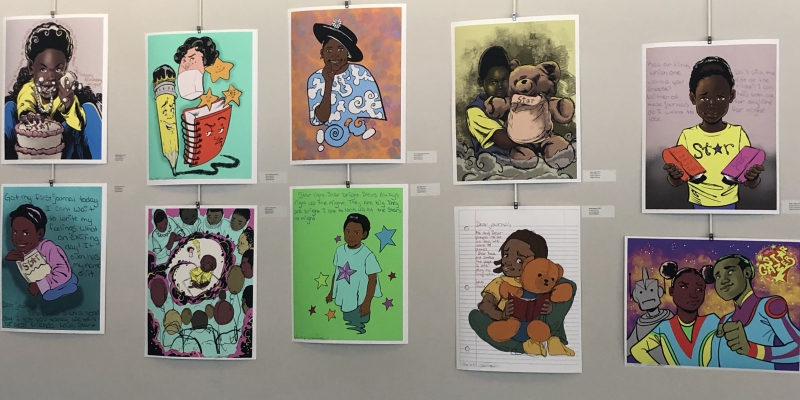
Photo by Amy Penne.
As we look back on 2021 and set a path for the year ahead, this writer can’t think of a more inspiring experience than Future Spaces in Community Places. In late September 2021, arts writer Amy Penne aptly ascertained this:
The University YMCA’s collaborative Future Spaces in Community Places exhibition does more work for diversity, equity, and inclusion than all of the committee meetings, hand-wringing, and jargon-based academic debates combined. This is what art can do. Must do. And in the brilliant hands of collaborators Stacey (BLACKSTAR) Robinson, Kamau (DJ KamauMau) Grantham, and Shaya (Chocolate Star) Robinson, the YMCA’s Murphy Gallery explodes with the energy, musicality, and activism that only art can deliver.
For Robinson and his collaborators, Afro-Futurism is “as what it means to “be Black people active in the future; that may be utopian or dystopian. Afrofuturism is about the Afro-Now. Are we serving our Afro-Present? Are we securing a meal for our community now so we have a future? Are we securing a winter coat so our kids and community members survive into the future? Afrofuturism isn’t just about Star Trek and space travel. Though, those are important for the imagination too. But are we providing the resources now to get us into our future?” This is the dialogue we need to carry forward into 2022.
Future Spaces In Community Places
Through December 17th
M-Th 9 a.m. to 9 p.m.; F 9 a.m. to 9 p.m., Sa noon to 5 p.m.
Murphy Gallery, Art @ the Y Series
University YMCA
1001 S Wright St, Champaign
The Bottom: Photography by Johanna Warwick
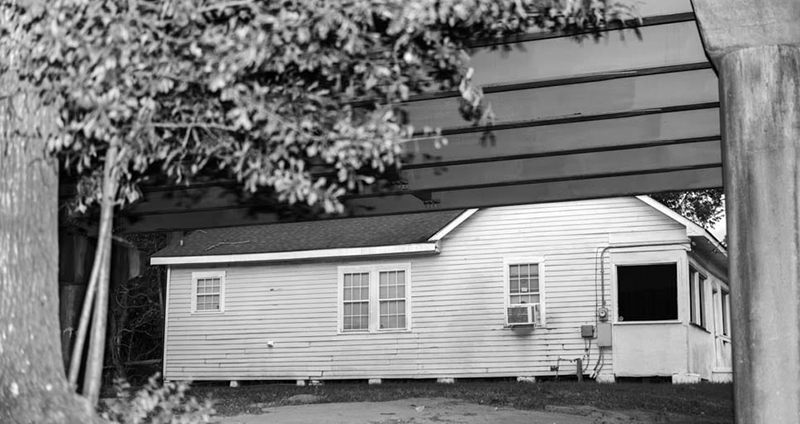
Under the I-10. Photo by Johanna Warwick.
In her exhibition artist statement, photographer Johanna Warwick writes :
“The Bottom is a series of photographs that are an investigation of the historic neighborhood Old South Baton Rouge in Louisiana. This is the community that I live in and it has a complex history of systemic and environmental segregation. I am making photographs of the landscape, residents and historical documents to look at how the past has shaped this area. I use the highway built in the 1960s as the framework for this series, focusing on government decisions that built elevated highways through low income neighborhoods. While examining this history, I am also documenting the future, as the highway is currently being expanded, with homes and businesses set to be torn down again.”
Warwick takes a mindful approach of her subject, “[recognizing] that histories are often told from the person with the most power and I understand my privilege in making these photographs.” By collaborating with her neighbors, she is able to “carefully negotiate my responsibility in how I am representing them. I hope the deteriorating infrastructure and highway can speak to the history of segregation” while striving to illustrate the residents’ complex range of emotions.”
The Bottom: Photography by Johanna Warwick
Virtual Art Exhibition hosted by the Springer Cultural Center
Through December 18th
View online
Hal Fischer Photographs: Seriality, Sexuality, Semiotics
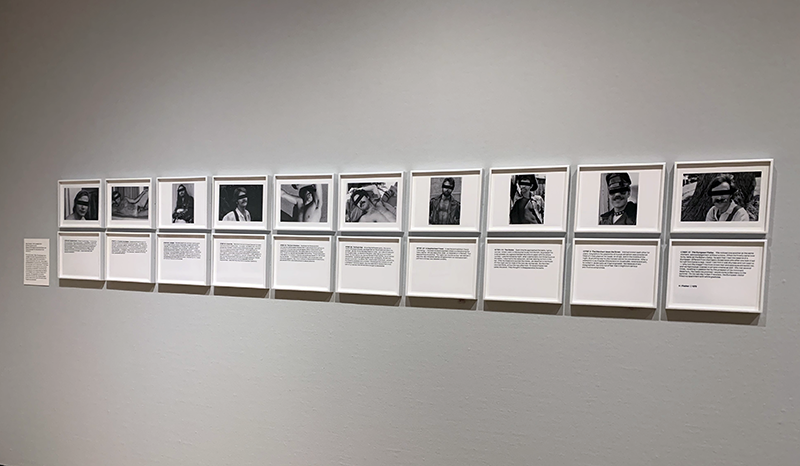
Photo by Debra Domal.
Right before my visit to Crip*, I experienced the Hal Fischer Photographs: Seriality, Sexuality, Semiotics. To consider “Gay Semiotics” in 2021 is to see the beginnings of gender studies as an artistic and academic subject. Its use of “subterranean codes and insignia of gay cruising are elevated, not without irony, to a comprehensive sign system.” Fischer “presents the photographer as an ethnographic explorer, cataloguing and decoding the mating rituals of a distinct urban tribe.”
If you think you have seen these images, or images like them, before, it is Fischer you have to thank for blazing the trail. His models are neither (or perhaps both) outsiders and insiders, subjects and collaborators, objects of study and makers of meaning. While this blurring of the lines is evident in the ‘Boy-Friends” series seen above, its ironic ethnographic approach elevates works like “Signifiers: Handkerchief, Earring, Keys,” above, and “Archetypal Media Image Leather,” seen below, beyond audience shock value and into a sign or symbol system with which a dialgoue about gay identity could begin.
Hal Fischer Photographs: Seriality, Sexuality, Semiotics
Through December 22nd
Krannert Art Museum
500 E Peabody Dr, Champaign
Museum Hours: T-Sat, 10 a.m. to 4 p.m.
(Closed Sunday and Monday)
Modernist Strategies: Highlights from the WPA
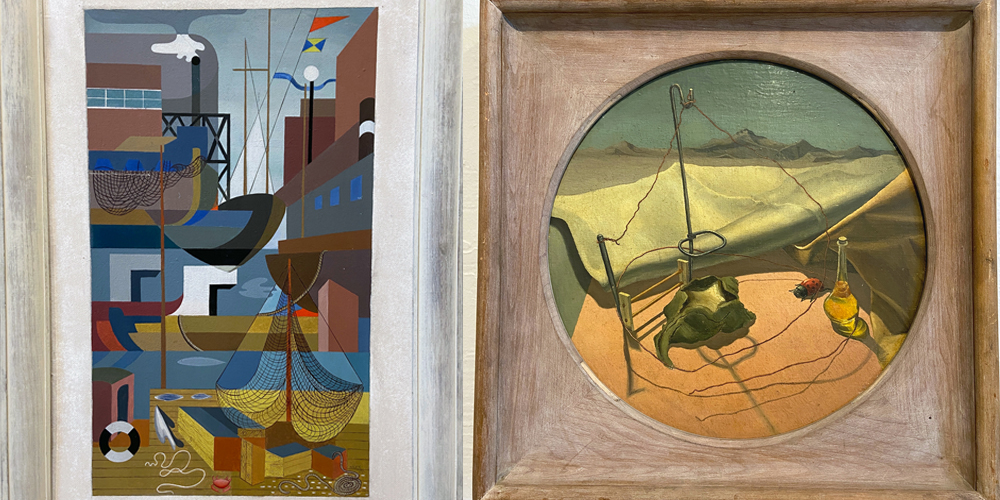
(L) Hilarie Hiler, Fishing Port, oil on masonite, 1936. (R) Waldo Glover Kaufer, Beginnings of Desolation, oil on canvas, ca. 1934-1943. Photos and image by Jessica Hammie.
Earlier this year my colleague Jessica Hammie shared her thoughts on KAM’s Modernist Strategies: Highlights from the WPA.
“There were a couple of things about this exhibition that immediately struck me: the variety of formal approaches on view, and the fact that so many of the artists were immigrants. The subject matter focused on daily life is a solid example of modernism, generally, but it’s the current moment of unemployment, wealth hoarding, and the fight for workers’ rights coupled with last week’s news of another billionaire rocketing himself into space for funsies that had me thinking about how so little has changed in this country.”
As the exhibition statement notes, the works included illustrate a range of “modernist visual strategies, including abstraction, expressive color, compressed or flattened space, and a reduction of detail. ” These strategies “communicate the heightened psychological tension and anguish experienced by many during this time. Modernist Strategies: Highlights from the WPA includes prints and paintings that navigate a fractured world, convey the struggles of ordinary people, and explore the complex relationship between workers and the industries that employed them.”
In the new year, this exhibition will move to the Collection Gallery and works from the WPA will rotate periodically.
Modernist Strategies: Highlights from the WPA
Through December 23rd
Krannert Art Museum
500 E Peabody Dr, Champaign
Museum Hours: T-Sat, 10 a.m. to 4 p.m.
(Closed Sunday and Monday)








